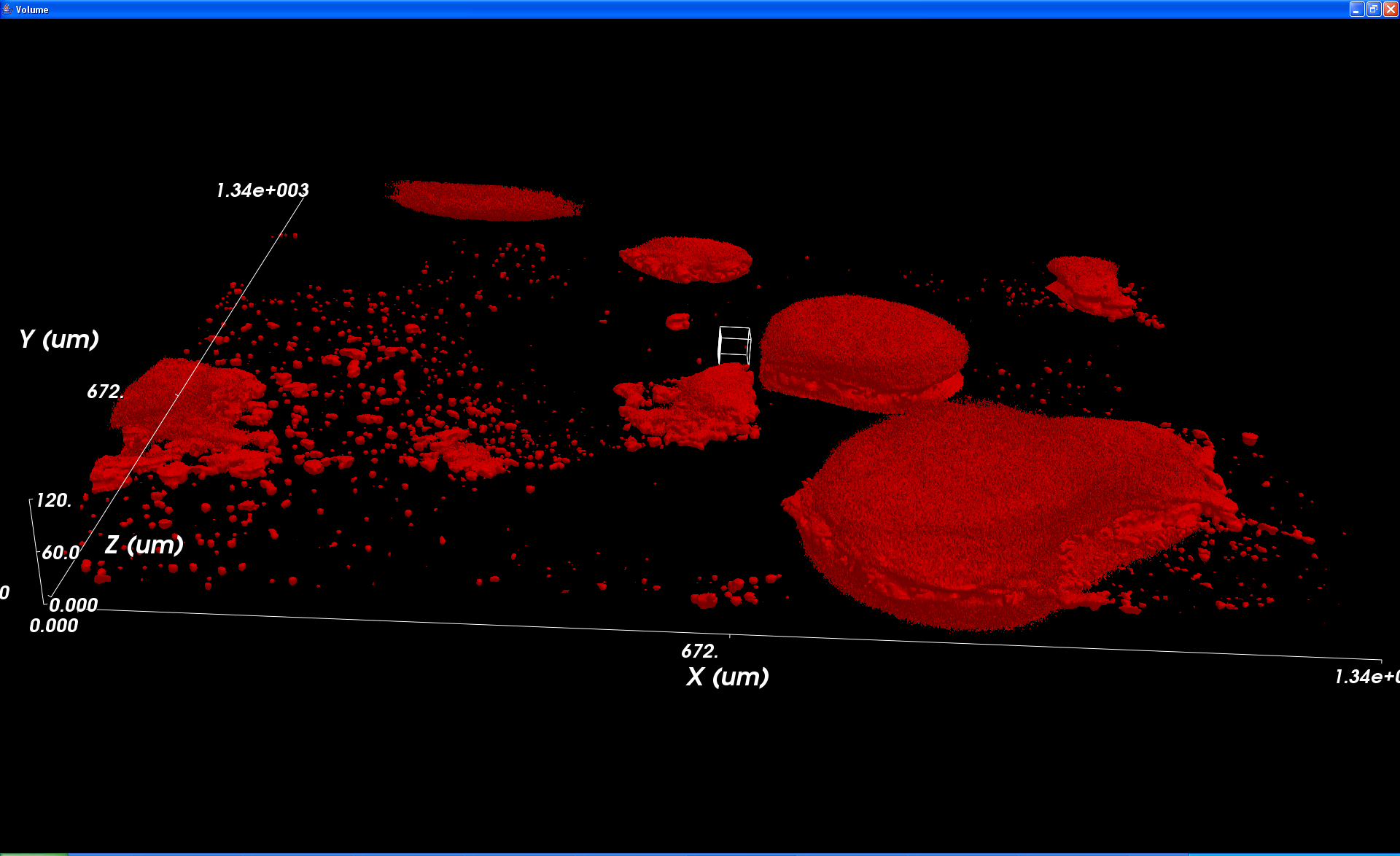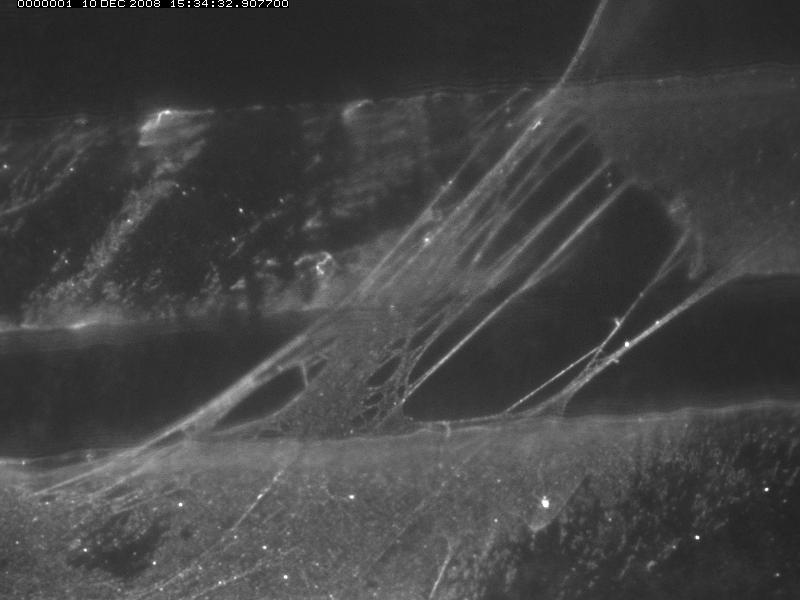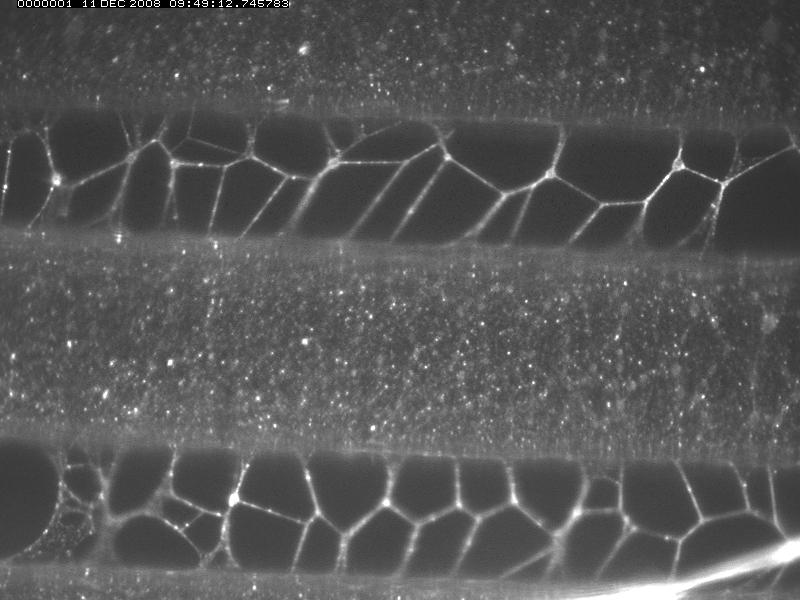ImageSurfer clarifies cilia locations

The image above shows one frame from a stack of images taken of a human lung epithelial cell culture. The well-separated spots were thought to be cross sections through cilia sticking out the tops of cells. There are some bright spots on the labeled cells and others (near the left of the image) that were thought to be above cells.
The ImageSurfer image shown below revealed that they were in fact isolated blobs of dye that were outside of the cells.






